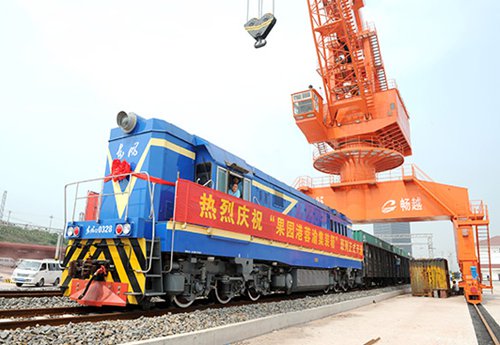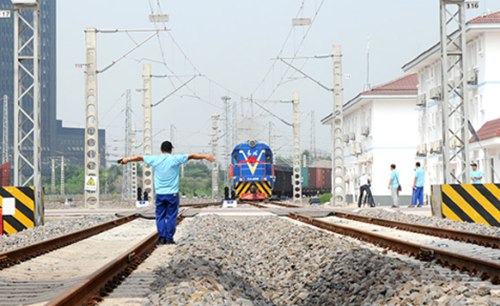Water-Road Combined Transport initiative reaches new milestone
Updated:2015-07-10
chinadaily.com.cn
 |
|
A freight train from Chengdu arrives in Liangjiang’s Guoyuan port on July 9. [Photo/liangjiang.gov.cn] |
After arriving at Guoyuan port, the cargo will be transported to various ports in the lower reaches of the Yangtze River, such as Shanghai port. It is expected that through the Water-Road Combined Transport initiative, shipping times and logistical costs will be reduced significantly.
The combined transport operation is significant to the connection of the Chongqing-Xinjiang-Europe rail route with the cities and regions along the country’s Belt and Road Initiative.
The freight route between Chengdu and Liangjiang’s Guoyuan port takes around 12 hours to complete.
 |
|
A freight train bound for Chongqing departs from Chengxiang in Chengdu. [Photo/liangjiang.gov.cn] |
According to Huang Ji, vice general manager of the Chongqing Gangwu Logistics Group, freight trains between Guoyuan port and Guizhou province and Yunnan province are expected to start operating this year. The opening of the route will enable cargo from West China to be delivered to different countries and regions via Guoyuan port.
The Guoyuan port in Chongqing’s Liangjiang New Area is a combined water, railway and road transport hub. A senior staff member from the Liangjiang Administrative Committee said that Chongqing constructed Guoyuan port to lay a good transportation foundation for trade between Chongqing and other countries.
Statistics from the Chongqing Administration of Customs show that the total volume of Liangjiang's foreign trade reached 67.62 billion yuan ($10.89 billion) in the first quarter of 2015, accounting for 48.10 percent of Chongqing's total foreign trade volume.
Edited by Jacob Hooson
Video

John Edwards, the UK trade commissioner for China, praised Chongqing over its rise as a burgeoning center in intelligent manufacturing.





